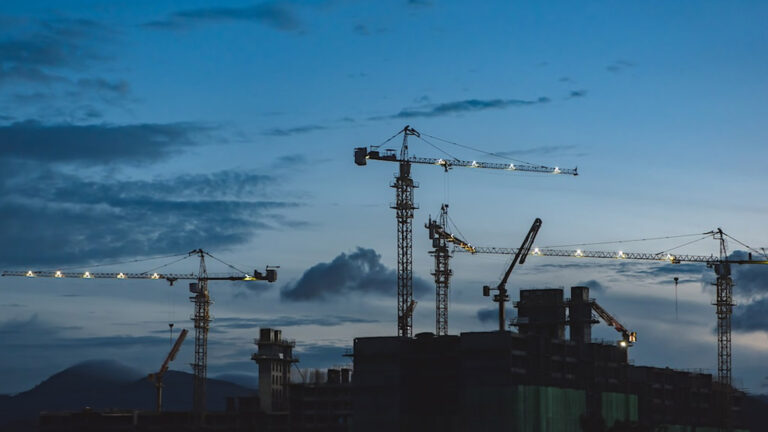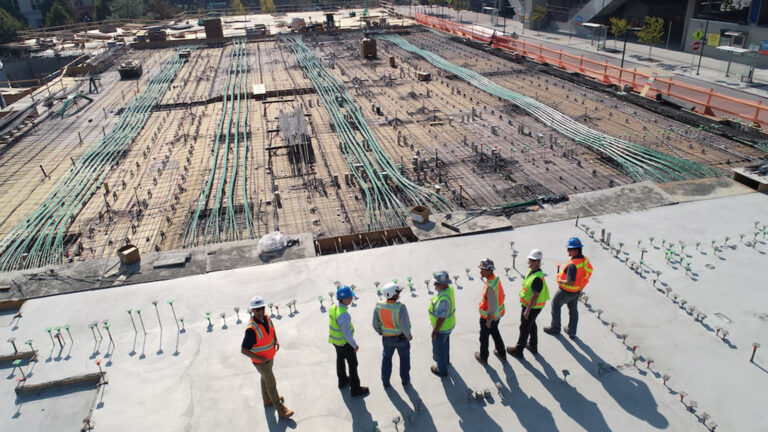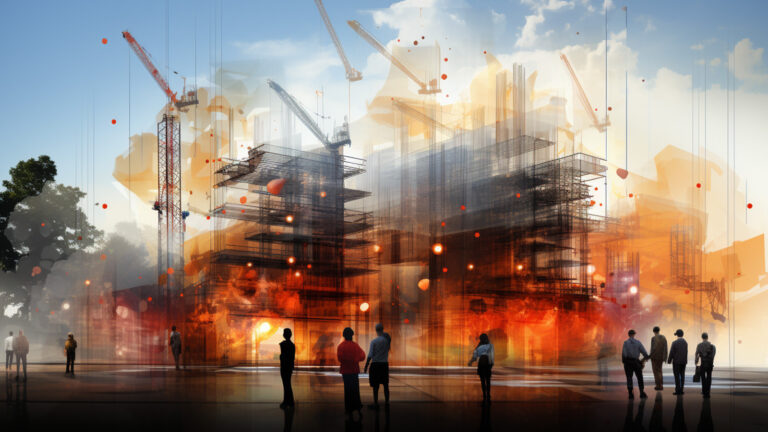
It’s more urgent than ever to understand the implications of seismic retrofit on building safety. Seismic retrofitting is key in safeguarding people and investments by boosting structural soundness when quakes hit. In this blog, we’ll discuss what seismic retrofit does and how it can be used for different situations to maximize safety. Are you ready to find out more about how seismic retrofitting makes buildings safer? Let’s get into it!
Seismic Retrofit ensures critical structures are strong enough so they won’t collapse during earthquakes- a process that improves resilience against disasters but also reduces risk of further damage after an earthquake has occurred. There are several kinds of techniques available such as strengthening foundation systems or changing components like walls or roofs that will make sure your property remains safe even in drastic conditions.. And these methods work differently depending on the context; some may require complex engineering solutions while others might be something much simpler like installing dampers inside existing elements. This way every house, factory etc., no matter its condition could have a tailored solution that fits its needs perfectly – all contributing significantly toward public welfare
Exploring the Concept of Seismic Retrofit
Seismic retrofit is essentially the process of reinforcing a building or structure to improve its ability to resist seismic activity, like earthquakes. The objective of seismic retrofitting is to diminish the risk of structural collapse during an earthquake, thereby increasing public safety and decreasing potential fiscal losses. Seismic retrofitting procedures can be utilized both before and after an earthquake has occurred. For buildings that have already been ruined by an earthquake, post-earthquake reinforcement may frequently assist in reinstating their structural soundness and limit further damage if another seismic event takes place. Have you considered adding additional protection for your home against any possible natural disasters? Retrofitting could provide some extra reassurance!
When it comes to seismic retrofit projects, structural engineers have a range of techniques at their disposal. They may use steel braces or plywood sheathing to strengthen walls; install extra bracing and anchors for roofs and columns; modify foundation systems so they better absorb energy during earthquakes; as well as amend floor plans in order to fortify them against lateral force from quakes. In some cases, concrete blocks and steel plates are also used for additional reinforcing effect. Have you ever experienced an earthquake?
In addition to seismic retrofit applications, there are plenty of other measures that can be put in place. Strengthening weak points in the structure of a building (such as corners) is key. Installing dampers into walls and floors to reduce vibration from shaking events during earthquakes is also important – this will help protect against extensive damage if an earthquake does occur. What’s more, improving drainage around the foundation system can prevent moisture accumulating near it during wet months; instability becomes an issue when too much water is present so it should definitely be avoided! Emergency shutoff valves connected directly into gas lines must also be implemented – otherwise a rupture could potentially cause leakage if an earthquake were to happen? All these combined safety precautions provide homeowners with added reassurance their property has been safeguarded against potential danger caused by natural disasters like earthquakes!
In addition to structural engineering designs tailored toward enhancing seismicity resistance in buildings, such as reinforced concrete slabs on grade (RCSG) or post-tensioned masonry (PTM), many countries have adopted strict codes that govern the minimum levels of reinforcement required for new construction projects. This is done so people’s safety can be ensured in case of future earthquakes – particularly those located along fault lines where seismic activity is expected more often than elsewhere around the world. Even older buildings require periodic inspections by qualified professionals who specialize in assessing potential hazards associated with existing structures; this makes sure any modifications needed are appropriately implemented before an unforeseen natural disaster like an earthquake occurs and potentially puts lives at risk from a collapse .
The Role of Seismic Retrofit in Enhancing Structural Integrity
Retrofitting seismic engineering is an essential practice which involves making already existing structures sturdier in order to make them more resistant against seismology. This process helps protect the general public by lessening the probability of structural collapse during earthquakes and it’s a significant step when aiming for secure buildings. Seeing that seismic activity has been growing all over the world, several countries have put together rules necessitating certain kinds of constructions to be retrofitted so they can meet resistance requirements for quakes.
Usually, this kind of retrofit requires reinforcing walls, floors foundations and roofs with additional strength so they can withstand strong shaking forces created from earthquake tremors.
When it comes to seismically retrofitting a structure, there are various methods that can be used. From adding reinforcing steel or concrete shear walls, installing base isolators and dampers on columns or beams for additional support to replacing old non-ductile columns with modern ductiles ones; all of these solutions help strengthen buildings in order to protect them from earthquakes. The ultimate goal is not only preventing structural failure but also minimising the damage caused by such events so repairs and rebuilding costs can be kept down – plus ensuring our buildings remain usable afterwards! That’s why seismic retrofit measures are worth considering if you live in an area prone to quakes.
In order to achieve this goal, engineers must carefully evaluate a building’s existing conditions before designing a retrofit plan that will tackle any weaknesses or deficiencies present in its design and construction. The cost of these renovations varies depending on the type of work required; typically it ranges from 10-30 percent of the total value which can become costly if done without delay prior to major earthquakes happening.
Seismic retrofitting provides an incredible benefit for people living in areas with seismic activity by supporting protection against potential destruction due to vibrations during quakes – all while preserving life and investments simultaneously. How amazing is that?
How Retrofitting Techniques Minimize Earthquake Risk
Earthquakes can be devastating, destroying buildings and bridges while taking lives in the process. Not to mention, this kind of natural disaster also carries a heavy economic toll due to infrastructure damage. Seismic retrofit is here to help as it strengthens existing structures against seismic activity by reinforcing their weak spots with special techniques that reduce earthquake-related risks significantly – boosting structural integrity and public safety in regions prone to these events. Questions remain though: how effective will such measures truly be?
When it comes to seismic retrofit, there are a number of techniques used in order to increase the strength and flexibility of existing structures so they can better withstand earthquakes without sustaining catastrophic damage. This includes bracing walls, installing shear walls and reinforcing foundations as well as damping systems. All these methods are designed with one goal in mind – protect people from injury or death due to falling debris caused by an earthquake event. Plus, it’s important that buildings have adequate resistance against any major seismic forces which could cause severe destruction throughout cities worldwide if left unaltered. So really having such measures implemented is essential for ensuring safety during disaster situations like this!
By decreasing the chances of structural breakdown, these procedures help to decrease probable fatalities during earthquakes or other natural catastrophes that could be caused by weakened buildings caving in due to their own weight or not being able withstand high wind speeds related with storms like hurricanes and typhoons. It’s incredible how something so small as employing specific techniques for structuring a building can save lives when Mother Nature makes her presence known. How much more destruction would there have been if people weren’t mindful about designing constructions appropriately?
Furthermore, seismic retrofitting can safeguard investments made in properties located in areas prone to earthquakes by diminishing the possibility of requiring costly repair work after an earthquake. This way, those who decide to invest their money not only benefit from increased safety but also financial security since they prevent potential future damages due natural disasters that could have been prevented with a preventive measure taken before. In essence this means as well that property owners will be safe if something unexpected happens while living there or when wanting later on sell their house without having any unwanted expenses associated directly to damage caused by past events which perhaps would have been avoided with proper protection against seismically active locations earlier on.
Public Safety Implications of Effective Seismic Retrofitting
It is essential to carry out seismic retrofitting for the purpose of maintaining structural integrity and guaranteeing public safety when it comes to earthquakes. Seismic retrofitting involves stiffening up existing buildings so that they can be more resilient against damages caused by quakes. This includes reinforcing walls, flooring systems, roofs as well as foundations; and also installing shock absorbers which aid in decreasing vibration during an earthquake episode. Around the globe, many countries have made compulsory rules where all types of structures must undertake a seismic retrofit process due to risk posed from potential earthquakes – this is just common sense!
In California, earthquakes are a reality that could cause serious destruction of property or loss of life if not properly addressed. This is why many cities in the state have implemented mandatory seismic retrofit regulations for buildings over 25 years old and/or higher than 3 stories tall (including soft-story buildings). By implementing these measures, it helps to protect both lives and investments from quake damage by significantly reducing the risk of structural failure during an earthquake. It’s just another way people can prepare themselves to face what nature throws at us!
Before any new construction can be done on a building, it has to pass certain regulations that verify the structure is stable. This includes inspections after completion and reinforcing materials like steel frames or concrete walls so they meet modern standards and all safety requirements are met before occupancy permits get issued. We see this in countries such as Japan which have implemented strict regulations for new constructions when dealing with strong earthquakes, typhoons or floods; their goal being to guarantee citizens stay safe despite natural disasters. These standards require reinforcement of buildings so they absorb vibrations from large quakes while keeping them stable at the same time – governments doing proactive steps really taking care of those living within their country boundaries!
Case Studies on Successful Implementation of Seismic Retrofit
Ensuring the safety of buildings during an earthquake is a top priority and seismic retrofitting can be an important tool in getting there. This process involves making changes to structural design, materials, and construction methods so that they are better able to withstand strong earthquakes. It also means setting up additional support systems like bracing walls, columns and foundations – all designed specifically with keeping a building stable under duress in mind. Installing these kinds components will help keep your property standing when faced with more severe ground shaking associated with larger quakes. But how effective is this technique really? Does it make any difference if you reinforce your structure before or after the fact?
Case studies from all around the globe have shown that seismic retrofitting has been extremely successful in numerous locations, significantly decreasing the chances of destruction or damage due to an earthquake. Japan is a particularly illustrative example – many buildings there had gone through extensive retrofit measures and were able to bear powerful tremors with very minor harm done. Similarly, California also saw both old constructions being reinforced using such strategies as well as new edifices built specifically with high levels of protection against extreme ground motion events.
When it comes to techniques for seismically reinforcing structures, one method which has proven remarkably effective is base isolation technology; this works by cushioning the structure when exposed to strong vibrations resulting from earthquakes via creating space between its foundation and basic surface hence absorbing some shock instead of transmitting them directly into structural elements..
In conclusion, seismic retrofit is a critical asset when it comes to increasing building safety during earthquakes. With the aid of this technique, we can significantly lessen the probability of structural collapse and protect people as well as investments. To make sure public security and structure steadiness in case of natural catastrophes like earthquake, it’s necessary for us to comprehend the influence that seismic retrofitting has on constructing protection. It’s an essential measure for maintaining everyone safe – how could you put a price tag on that?
Are you thinking of having a seismic retrofit done on your building? When it comes to protecting what’s yours and the people in it, nothing should come above that. Don’t take chances when it comes to safety – get Hanthel Consulting’s help now for expert assistance as well as full-on retrofitting services. Our team of experienced pros will collaborate with you to gauge earthquake risk factors highly relevant in your area plus offer budget friendly yet dependable service plans created explicitly fitting into the needs of your construction. We understand each project is specific and we won’t stop until all safety protocols are accomplished while still taking into consideration budgetary restrictions. With years’ worth of expertise when talking about seismic retrofits, Hanthel Consulting has precisely what takes place so that during an earthquake or any other seismic event, your property stands firm and secure! Get our free consultation today!



